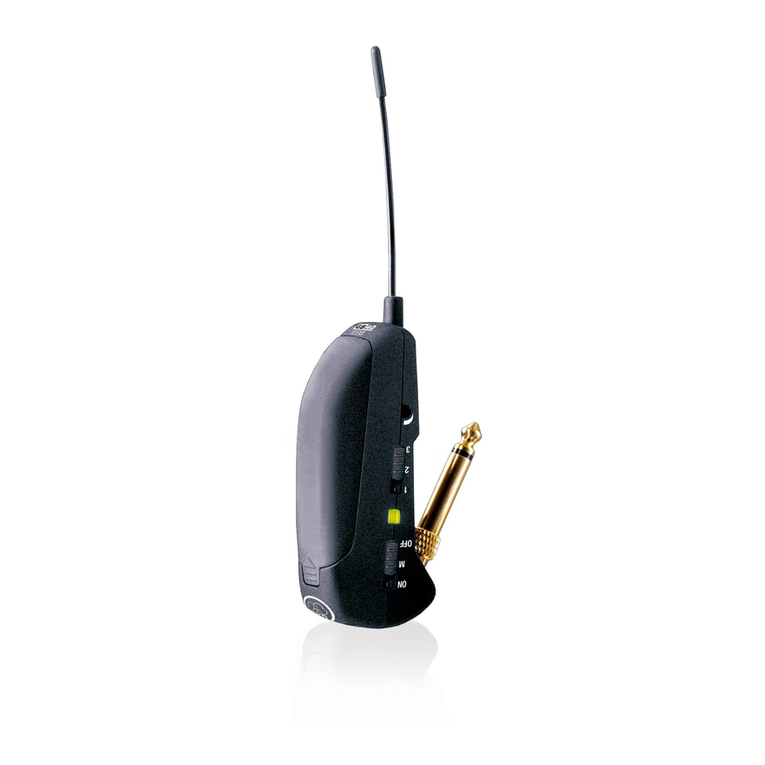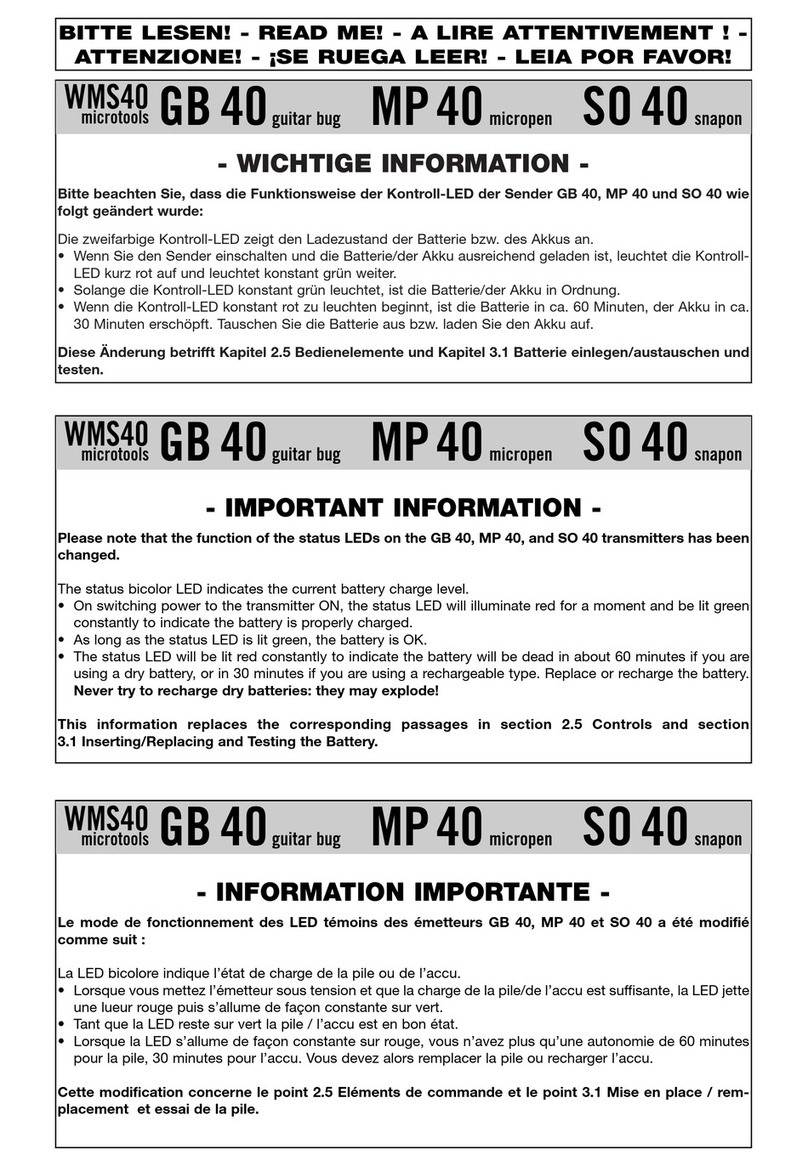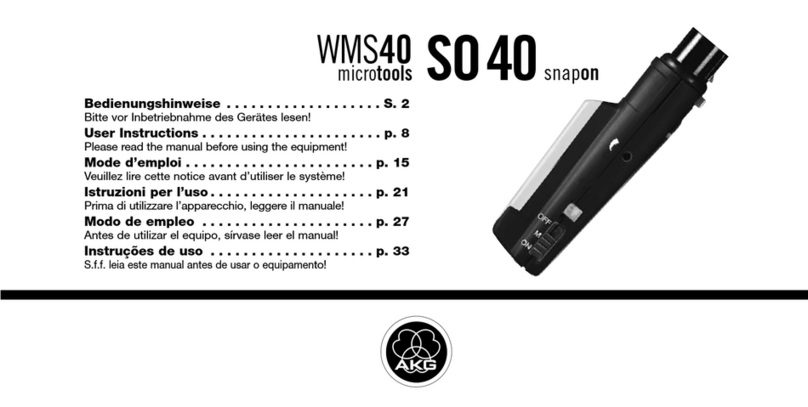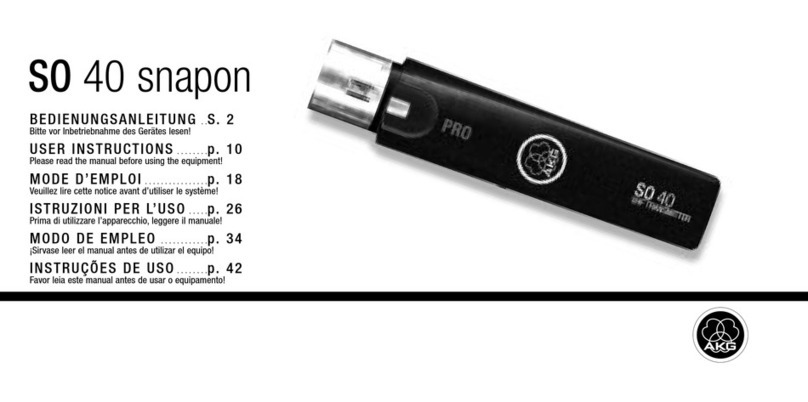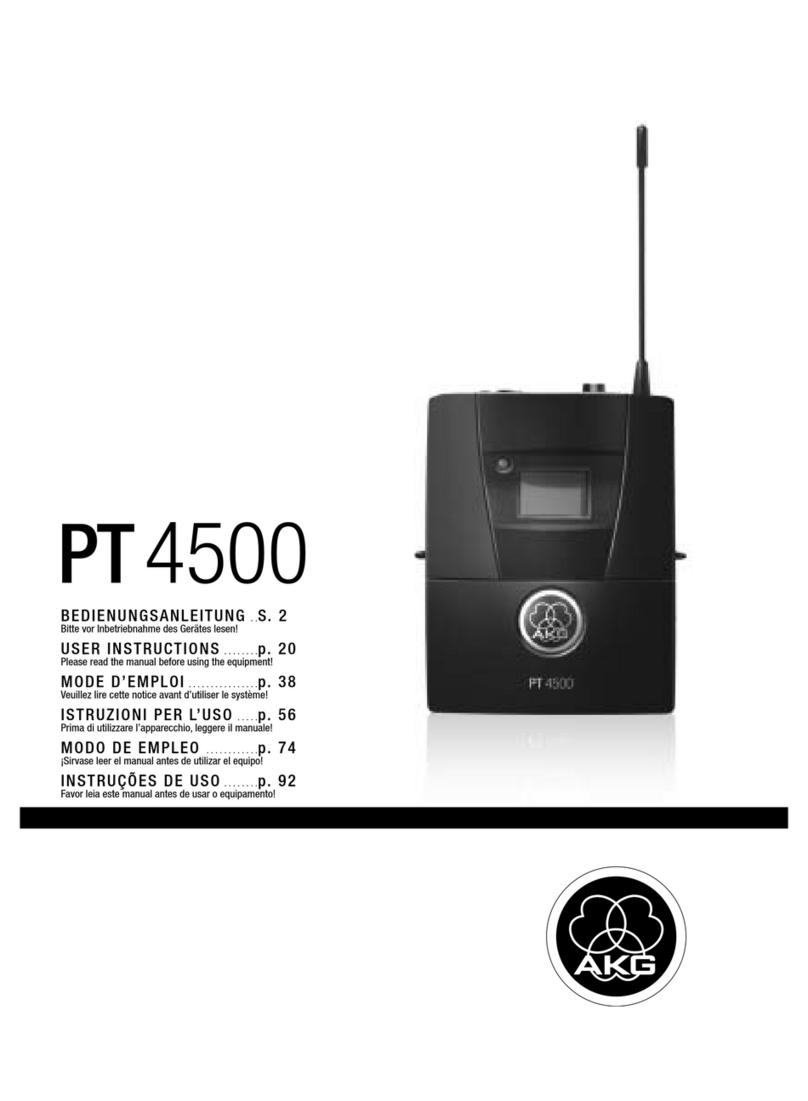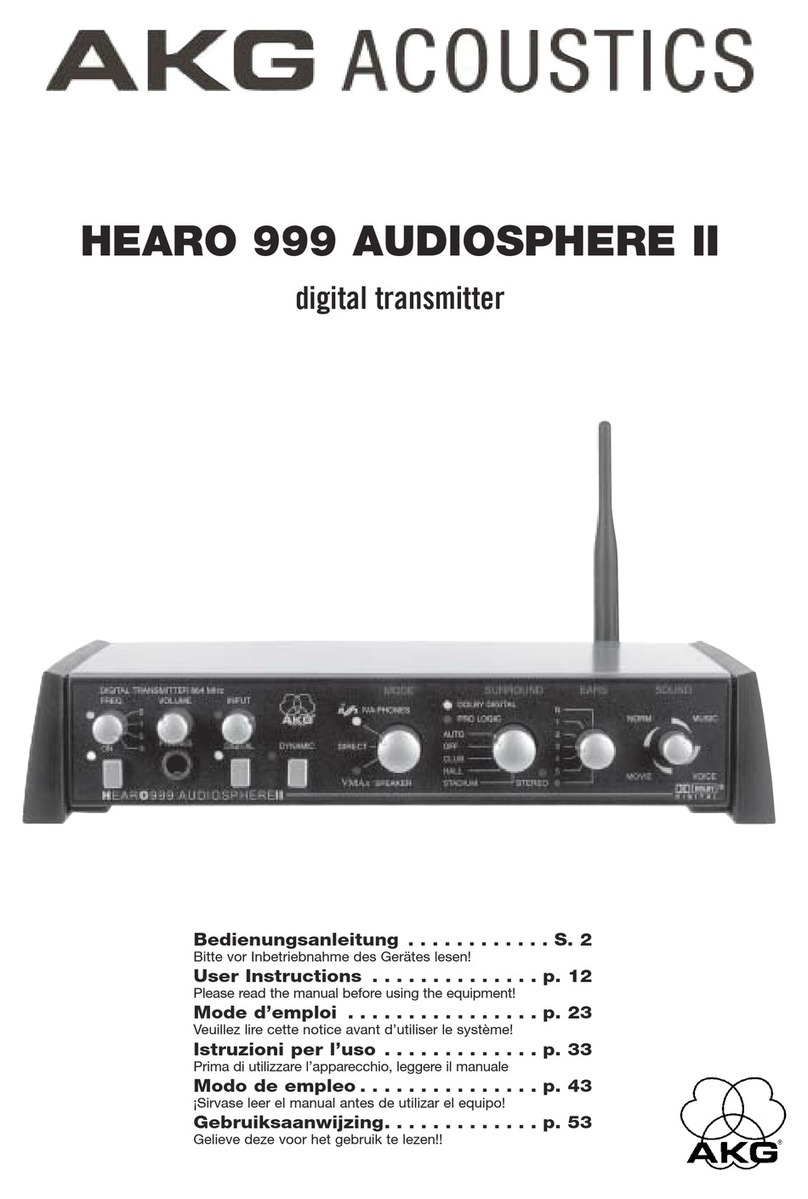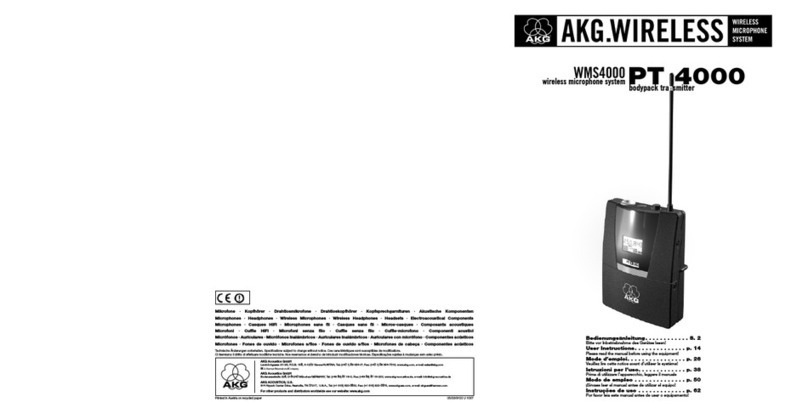1 Sicherheit und Umwelt
1.1 Sicherheit
1. Setzen Sie das Gerät nicht direkter Sonnen-
einstrahlung, starker Staub- und Feuchtigkeits-
einwirkung, Regen, Vibrationen oder Schlägen
aus.
1.2 Umwelt
1. Entsorgen Sie verbrauchte Batterien und Akkus
immer gemäß den jeweils geltenden
Entsorgungsvorschriften. Werfen Sie Batterien
oder Akkus weder ins Feuer (Explosionsgefahr)
noch in den Restmüll.
2. Wenn Sie das Gerät verschrotten, entfernen Sie
die Batterien bzw. Akkus, trennen Sie Gehäuse,
Elektronik und Kabel und entsorgen Sie alle
Komponenten gemäß den dafür geltenden Ent-
sorgungsvorschriften.
3. Die Verpackung ist recyclierbar. Entsorgen Sie
die Verpackung in einem dafür vorgesehenen
Sammelsystem.
2 Beschreibung
2.1 Einleitung
Vielen Dank, dass Sie sich für ein Produkt aus dem
Hause AKG entschieden haben. Bitte lesen Sie
die Bedienungsanleitung aufmerksam durch,
bevor Sie das Gerät benützen, und bewahren Sie
die Bedienungsanleitung sorgfältig auf, damit Sie
jederzeit nachschlagen können. Wir wünschen
Ihnen viel Spaß und Erfolg!
2.2 Lieferumfang
• Kontrollieren Sie bitte, ob die Verpackung alle
oben angeführten Teile enthält. Falls etwas fehlt,
wenden Sie sich bitte an Ihren AKG-Händler.
2.3 Optionales Zubehör
• Optionales Zubehör finden Sie im aktuellen
AKG-Katalog/Folder oder auf www.akg.com.
Ihr Händler berät Sie gerne.
2.4 Beschreibung
Der GB 40 ist ein Miniatursender der Serie WMS 40
microtools, der speziell für E-Gitarren und E-Bässe
entwickelt wurde, aber auch für Keyboards geeig-
net ist.
Der Sender ist mit einem fix verbundenen,
schwenkbaren 6,3 mm-Klinkenstecker ausgestat-
tet, mit dem Sie den Sender direkt an die Aus-
gangsbuchse Ihres Instruments anstecken können.
Eine eingebaute Feder zieht den Sender zum
Instrument und fixiert ihn dadurch sicher am
Instrument. Die Unterseite des Senders ist mit einer
Auflage aus weichem Kunststoff ausgestattet, der
am Instrument keine Spuren hinterlässt.
Der GB 40 arbeitet auf einer fixen, quarzstabilisier-
ten Trägerfrequenz im UHF-Trägerfrequenzbereich
von 710 bis 865 MHz und ist mit einer fix montier-
3
GB 40 guitarbug
L
!
1 Sender
GB 40 1
Adapter-
stecker, lang
1 Batterie
Größe AAA
1 Batterie-
deckel
(schwarz)
